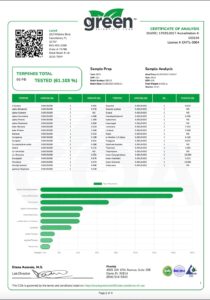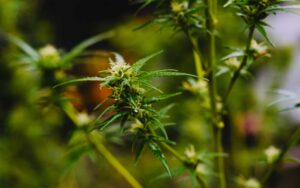Botanical, Synthetic & Cannabis-Derived Terpenes – Types of Terpenes
Being fully informed about the products we consume is essential to protect our health and wellness. However, navigating the evolving science, limited research, and misinformation can be difficult. Our experts are here to explain what terpenes are and where they come from.
First, let’s discuss the rise of synthetic terpenes.
Now that terpenes are all the rage, we have seen a significant rise in synthetics. Brands have started adding terps to their tinctures, oils, ointments, beverages, and edibles. Companies like Altria (the tobacco giant behind Marlboro) are working to capitalize on the wave by creating designer strains with specific terpene concentrations.
Unlike food purchased at a grocery store, which has standardized product labels, pages of reviews, and researchable manufacturing info, there remain several unanswered and under-researched questions on cannabis & hemp additives and how they may or may not impact our health.
Here is what experts know *so far* on the difference between synthetic and botanical (natural) terpenes and what you should look for when choosing a product like Delta 8 based on terpenes.
The Types of Terpenes
Synthetic terpenes are manufactured in a laboratory setting to create perfect terpenes. Like other artificial food additives, synthetic terpenes may be food-grade, but they do not originate from a plant.
Botanically-derived terpenes (BDTs) are naturally produced to repel predators or seduce pollinators. Products like lavender lotions (linalool) and car air fresheners (pinene) commonly use these types of terpenes. Many vapes, edibles, and topicals contain botanical terpenes extracted from plants other than cannabis. If you are allergic to certain essential oils, be sure to check the label.
Cannabis-derived terpenes (CDTs) also fall in the botanical bucket. Technically, they are the same since the myrcene in mangoes is the same component found in cannabis. In analogous terms, consider how makers preserve terpene content by flash-freezing buds right at harvest. Like cold-pressed juices, they retain more beneficial compounds from the mother plant. The terpenes are also less common because of the costly methods to extract them (it takes a lot of good, hard-grown bud to make a little bit of pure CDTs).
So if terpenes are naturally occurring, why would anyone go through the effort and costs to design their own?
Cannabis capitalism. Altira recently began moving to patent designer strains with specific terpene concentrations. They even offer specialized flavor and aroma profiles. They hope these strains will create consistent nuanced entourage effects and associated therapeutic benefits.

The above lab test depicts a Christmas tree of different terpenes. This depiction is a clear example of a cannabis-extracted strain profile.
The Final Word
Proceed with caution, especially when consuming synthetic terpenes. These terpenes are commonly found in questionable products made with distillate or isolate.
While synthetic terpenes may be entirely safe, there is always a risk of health effects due to the chemical residues left behind. Unlike GMO foods, there is currently no research on cannabis additives. It is still unknown how well synthetic and natural terpenes interact together and inside the body.
The technology is still under development. Many of the professionals behind it do not yet fully understand botanical and synthetic terpenes. Until we have more answers, industry experts agree to seek out terpenes labeled as whole plant, live resin, and CDT. These labels tell you that the content of the product is as close to the original cannabis plant as possible.
Stay Aware, Stay Healthy
And when in doubt, ask.
Ask the budtender. Question the dispensary. Ask the company producing the product what they use. Check what types of terpenes they’re using- does it contain botanical, synthetic, or cannabis-derived terpenes, and whether they are adding other essential oils.
Your best bet is whole plant products with all the cannabinoids and terpenes intact.
Someday, cannabis will follow food. There will come a point when the law requires brands to be more transparent and list all ingredients. Until then, it falls to consumers to set the standard. We have to demand high-quality, safe, transparent, and effective products by voting with our dollars.



